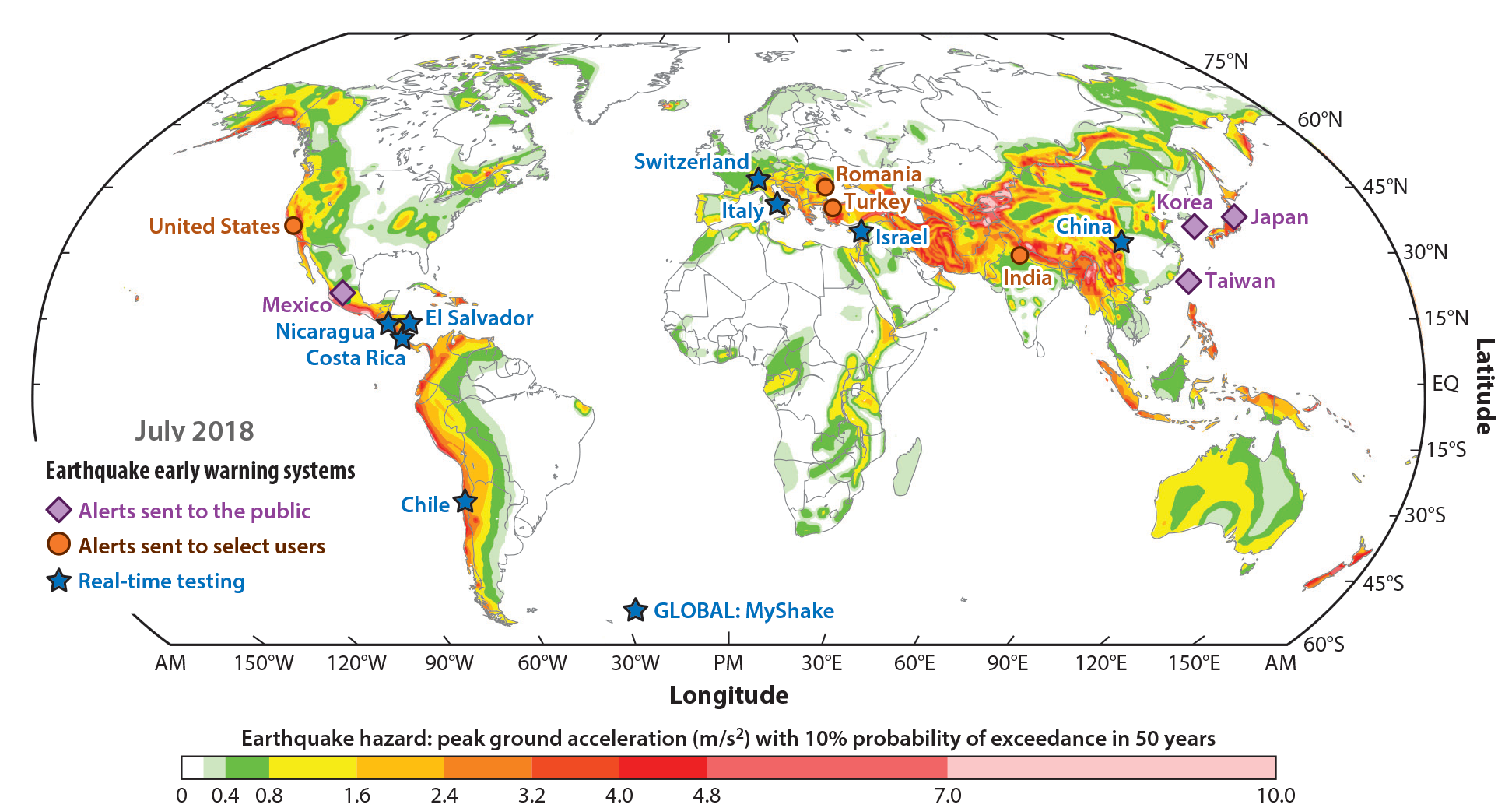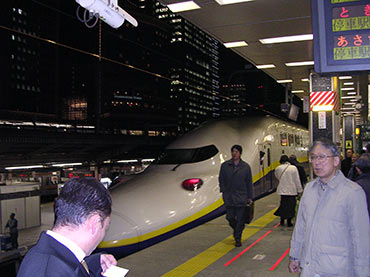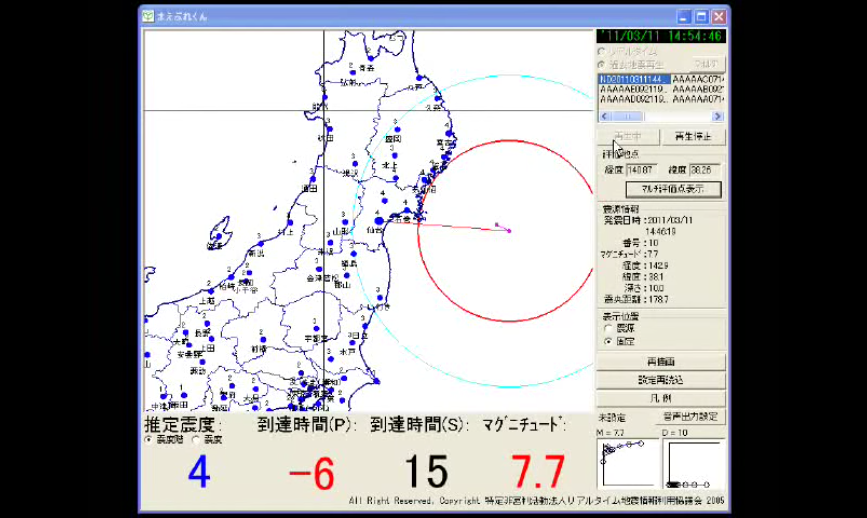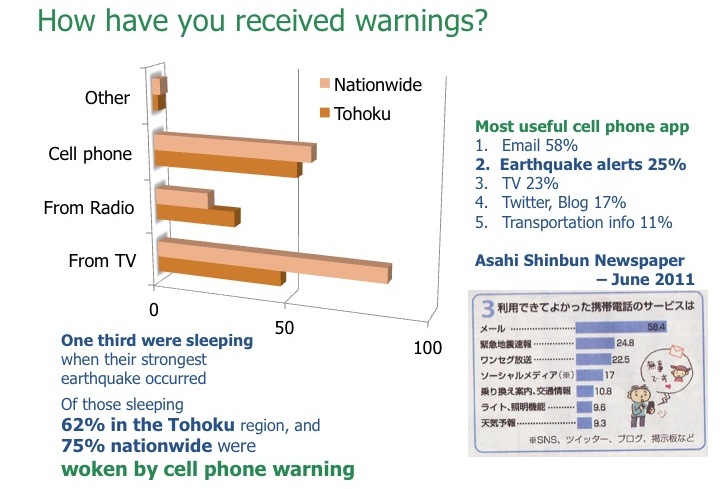BSL’s ElarmS earthquake early warning code in use in 5 countries globally.

Status of earthquake early warning systems in different regions of the globe. Shown are locations of systems that broadcast alerts to all members of the public (purple), systems distributing alerts to select users (orange), and systems undergoing real-time development and testing (blue). The background is the seismic hazard presented as peak ground acceleration with 10% probability of exceedance in 50 years.
Earthquake Early Warning is in use in more than sixteen countries globally. Mexico, Japan, South Korea, and Taiwan provide public alerts. India, Romania, Turkey, and the United States are providing limited alerts to selected users. A final eight contries are uundertaking real-time testing and development of an alert system: Chile, China, Costa Rica, El Salvador, Israel, Italy, Nicaragua, and Switzerland. There is also the effort, led by the Berkeley Seismology Lab, to build a global earthquake early warning platform using smartphones: MyShake.
The earthquake early warning algorithm developed by BSL—ElarmS—is being tested in five countries globally as part of their work towards building their own national systems. In Israel, ElarmS is being run in a testing mode nationally by Geological Survey of Israel (GSI). Israel is looking to expand to a full public system in the future and ElarmS is one of the methods under consideration. South Korea’s Korea Institute of Geoscience and Mineral Resources (KIGAM) is testing ElarmS nationwide to protect residents and businesses. The Kandilli Observatory in Turkey is testing ElarmS in a very limited region. Rounding out the worldwide reach of ElarmS, both Chile and Peru are running the code in test mode.
Earthquake Early Warning in Japan
In October 2007 Japan turned on the first publicly available nationwide earthquake early warning system. On March 11, 2011 it had its first true test during the M9 Tohoku earthquake off the coast of Sendai. The system issued a warning before the S-wave arrived onshore, a great achievement for the seismological community in Japan.
More about the video above
The user is in Sendai (the closest major city) so the countdown is until the S-wave arrival in Sendai. The radiating circles are the P-wave (blue) which does little damage while providing the information upon which the warning is based, and the S-wave (red) representing the onset of strong shaking. This comes from the Real-time Earthquake Information Consortium. In the coastal areas close to the epicenter there was 15 sec warning prior to the strong shaking.
More about Japan's earthquake early warning system
Japan's nationwide public warning system now makes use of 1100 seismic stations operated by the Japan Meteorological Agency (JMA) and the National Research Institute for Earth Science and Disaster Prevention (NIED). The JMA-operated system issues alerts via TV, radio, cell phones and a plethora of other specialty devices developed by the private sector.
Earthquake early warning in Mexico
Mexico City's warning system began operation in 1991 making it the first public earthquake early warning system anywhere in the world. The system uses seismometers along the Guerrero coastline to detect large earthquakes. Warnings are then broadcast electronically to Mexico City where alarms sound. Given the distance of the city from the earthquake source zone, warnings are usually more than one minute.
Earthquake Early Warning
BSL: Recent News Stories
Seismo Blog Posts About Earthquake Early Warning
- Alerts for the Whole West Coast
- Extremely Useful – But Not a Perfect System
- Earthquake Early Warning is Finally Here
- It Worked ... and It Did Not!
- Temblors and Politics
- Earthquakes, High Tech and Tinkerers
- What Mexico Has, California Is Lacking
- Shaken But Not Stirred
- Shaking Expected in 30 Seconds
- Slow Trains and Earthquakes

EEW in Japan
The Bullet Trains were one of the first users of earthquakes early warning in Japan.








